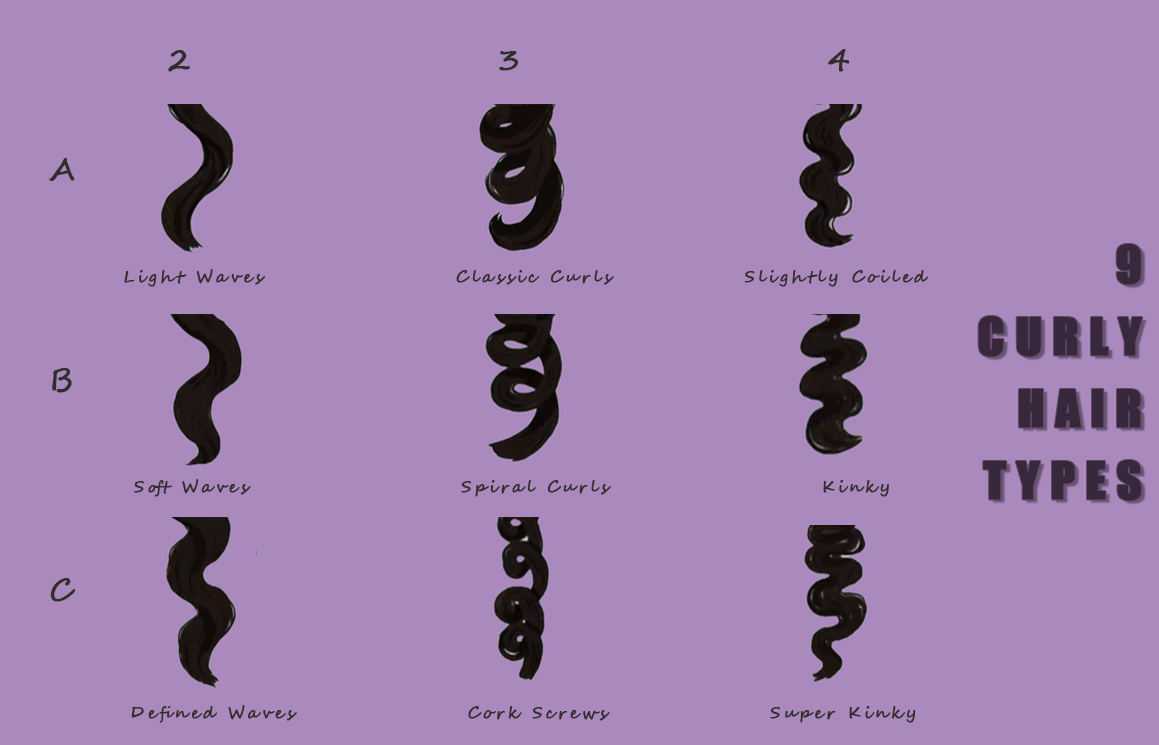How to Identify Your Hair Type and Why It Matters
Knowing your hair type is essential to determining the ideal hair care regimen, much as knowing your skin type aids in selecting the appropriate skincare products. distinct textures call for distinct treatments; for example, curly hair types may not respond well to some treatments, and thinning hair requires a different strategy than color-treated hair. You may choose products that complement your natural texture and offer the ideal amount of moisture and care by using a curl types chart to determine your curl type. We've asked hairstylists to explain the different types of curls and the best techniques to take care of them in order to make things easier.
The Importance of Understanding Your Hair Type
Knowing your hair type helps you understand how it behaves naturally, including how it responds to humidity and styling products as well as how it absorbs moisture. Hair changes throughout time as a result of aging, hormonal changes, heat damage, or chemical treatments, just like skin. Knowing your hair type enables you to select the ideal maintenance regimen, guaranteeing healthier, easier-to-manage hair.
The 4 Primary Types of Hair and Their Subtypes
Each of the four primary categories of hair types 1–4 is further subdivided into three groups according to the texture and curl pattern. According to some celebrity hairstylists, "each subcategory represents a variation in the tightness of the wave or curl." For instance, 2C has a more defined wave than 2A, which has a looser one.
Additionally, we offer professional advice on the ideal hair care products for every hair type.
Straight Hair (Type 1)
This hair type is naturally straight and lays flat, often becoming oily quickly because scalp oils travel easily down the hair shaft.
- 1A: Very fine, flat, and shiny. Use volumizing and texturizing products for added lift.
- 1B: Straight with some texture and body. Lightweight products enhance volume without adding oiliness.
- 1C: Straight with natural bends, prone to frizz. Avoid heavy creams that weigh hair down.
Wavy Hair (Type 2)
Wavy hair has an “S” shape and offers more texture than straight hair but isn’t as tightly coiled as curly hair.
- 2A: Loose, soft waves that can go flat easily. Volumizing products help maintain lift.
- 2B: Defined beachy waves that may flatten at the roots. Dry shampoos and curl creams add texture and hold.
- 2C: Deep S-pattern waves with more frizz. Moisturizing products and hair-plopping techniques enhance definition.
Curly Hair (Type 3)
Curly hair forms well-defined curls or ringlets. It tends to be drier and requires extra moisture to stay healthy.
- 3A: Loose, bouncy curls prone to frizz. Hydrating curl creams work best.
- 3B: Tighter, springy ringlets with more volume. Avoid heavy silicones and use lightweight moisture.
- 3C: Coarse, tight corkscrew curls that need regular conditioning to prevent breakage.
Kinky/Coiled Hair (Type 4)
The most delicate hair type, coiled textures have tight curls or zigzag patterns and require consistent hydration and gentle care.
- 4A: Tight S-shaped coils that hold moisture well. Use curl creams for definition.
- 4B: Densely packed zigzag curls with high shrinkage. Rich moisturizers prevent dryness.
- 4C: The tightest, most fragile coils with minimal natural definition. Heavy moisturizers and detanglers are essential.
RELATED: How to Identify Your Curl Type Easily

PHOTO: EasyNjoy
How to Determine Your Type of Hair
Some experts advise washing your hair and letting it air dry or use a blow dryer without the use of brushes or style equipment in order to precisely identify your hair type. Examine its natural texture and shape when it has dried, then contrast it with the hair type guide.
The following are other important questions you can ask yourself:
- Does my hair normally dry straight, wavy, curly, or tightly coiled?
- Does it get frizzy, dry, or brittle at the ends?
- How does my hair react to humidity?
- Does using a deep conditioner make my hair feel heavy or lighter?
You can determine your hair type and choose the finest products for it by looking at your hair and taking these variables into account. It's also beneficial to consider the state of your hair, including whether it requires further strengthening, hydration, or treatment for color fading. A professional stylist can offer clarity and tailored advise if you're still unclear.

